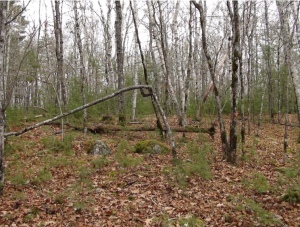Wetland Habitats
Ribbonsnakes are semi-aquatic and occur in a variety of wetland habitats including along slow moving streams and lakeshores, in fens, marshes and wet meadows. They are most often seen near the water's edge; although they occasionally occur away from water, including along roads, presumably as they travel between wetlands. They are cryptic and are often found amongst dense vegetation including shrubs, sedges and sphagnum. They are known to climb above the ground in shrubs and small trees.
Habitat requirements of ribbonsnakes are still largely unknown. We are working to understand what wetland features are important to ribbonsnakes so that we can better predict and protect their habitat.


Example of summer ribbonsnake habitats
Winter Habitats
Ribbonsnakes spend the winter underground, where they must avoid freezing and dessication. We know very little about the specific sites where ribbonsnakes spend the winter. Recent sightings suggest that many snakes may move considerable distances from the wetlands to overwinter in terrestrial habitats, although some may remain with the wetland's floodplain.
In 2009, the first known overwintering site was found. This site is in a wooded area, approximately 150m from the nearest wetland. Several ribbonsnakes have been found at this site in late fall and early spring for the past three years. Within this site there are a number of small holes in the ground and it appears that while snakes return to the same general site each year, the specific holes used by the snakes vary.
Research into overwintering habitats is ongoing. Locating these sites is a challenge. You can help by surveying woodland habitats and reporting any sightings of ribbonsnakes in the fall and spring.


Wooded wintering site Potential wintering site at the edge of floodplain


